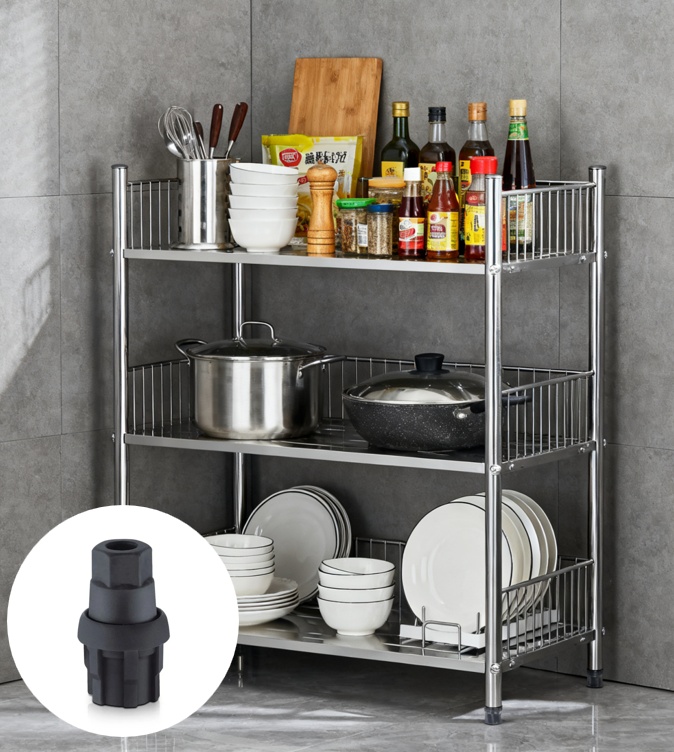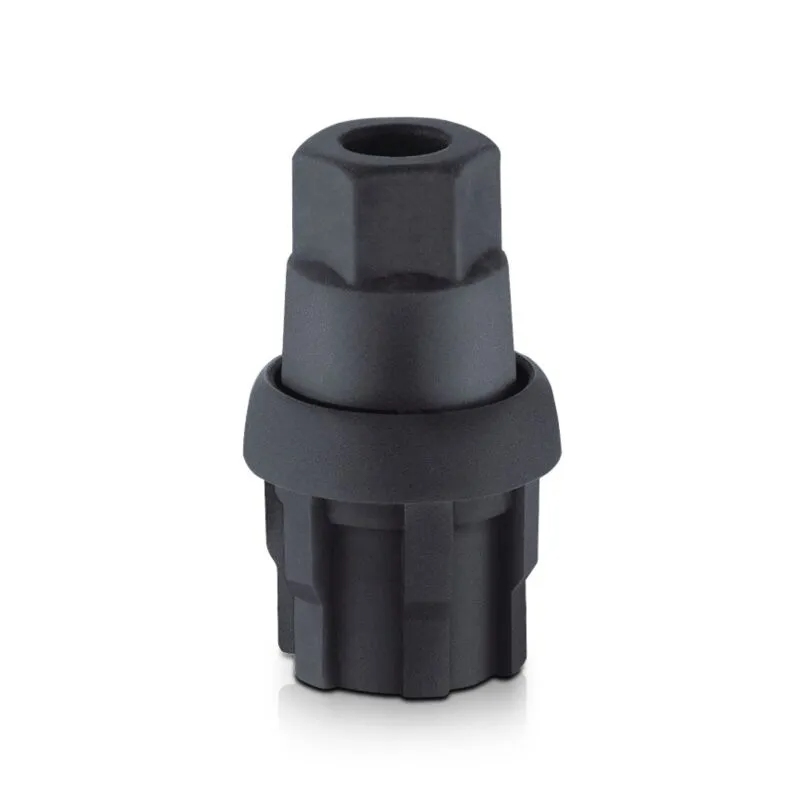5 Days a week from 8:30 am to 5:30 pm
Picking the Perfect Bullet Feet for Your Commercial Kitchen

Running a busy commercial kitchen means juggling a lot—hot orders flying out, staff hustling, and equipment holding up under constant pressure. One small detail often gets overlooked: the feet on your kitchen gear. These aren’t just props. They’re the unsung heroes keeping everything steady on slick floors or uneven tiles. Get them wrong, and you risk slips, wobbles, or worse. But choose right, and your setup runs smoother, safer, and lasts longer. In this post, we’ll walk through how to pick the right bullet feet for your kitchen utensils. Think fryers, prep tables, ovens—all that heavy-duty stuff that powers your operation. We’ll keep it straightforward, drawing from real-world kitchen needs to help you make smart calls.
Understanding Bullet Feet in a Commercial Setting
Picture this: peak lunch rush. Your fryer tips just a bit because its feet can’t grip the floor. Chaos. Bullet feet—those compact, adjustable supports—fix that. They’re designed for tough spots like commercial kitchens, where gear takes a beating from spills, heat, and daily wear.
Why Stability Counts More Than You Think
In a pro kitchen, floors vary. Some are smooth concrete, others grated metal or tile that shifts. Bullet feet level things out fast. They absorb shocks from heavy loads, like a full pot of oil or stacked trays. Without solid footing, your utensils vibrate. That leads to uneven cooking or quick breakdowns. I’ve seen spots where wobbly stands caused spills—messy cleanup and lost time. Good feet prevent that. They lock in place, so your team focuses on food, not fixing gear.
Boosting Longevity and Daily Flow
These feet aren’t one-and-done. Pick durable ones, and your utensils last years longer. They cut down on rust from steam or grease buildup. Plus, easy adjustments mean less downtime. Staff can tweak height in seconds—no tools needed. That keeps your kitchen humming. Over time, it adds up: fewer repairs, happier crew, steadier output.
Think about it. In high-volume spots, gear moves around. Bullet feet with grippy bases stay put, even during deep cleans. They protect floors too—no scratches from metal scraping. It’s all about that seamless rhythm in your space.
Factors That Guide Your Choice
Choosing the right bullet feet boils down to matching them to your kitchen’s demands. Not all are equal. Some shine in wet zones; others handle massive weights. Let’s break it down so you can spot what fits.
Material Matters: Matching to Your Environment
Materials make or break performance. Rubber grips slick surfaces but might wear in heat. Stainless steel laughs off corrosion—perfect for steamy back-of-house areas.
Here’s a quick rundown:
- Rubber-coated bases: Great for noise reduction and floor protection. They stick well on tile without slipping.
- Stainless steel: Tough against acids and salts from food prep. Won’t rust, even after constant washing.
- All-metal builds: For spots needing max strength, like under industrial mixers.
Pick based on your daily grind. Oily floors? Go rubber. High humidity? Steel all the way.
|
Material Type |
Best For |
Drawbacks |
Lifespan Estimate |
|
Rubber Base |
Wet, noisy kitchens |
Can crack in extreme heat |
2-3 years |
|
Stainless Steel |
Corrosive, steamy areas |
Might scratch floors if not padded |
5+ years |
|
Hybrid (Rubber + Steel) |
Versatile, all-around use |
Slightly pricier upfront |
4 years |
This table shows how each stacks up. Use it to weigh options against your setup.
Adjustability: Fine-Tuning for the Win
No kitchen’s floor is perfectly flat. Adjustable bullet feet let you dial in the height—up to an inch or more. Threaded stems twist easy, so one person handles it. Look for ones with clear markings for quick sets.
Why fuss? It evens out loads. Your fryer sits flush, heat spreads right. Uneven feet strain motors, hike energy bills. Adjustable ones adapt as floors settle or gear shifts. Pro tip: Test the range. Can it handle your tallest stack?
Load and Wear: Handling the Heavy Stuff
Commercial gear packs pounds. A single oven might tip 200 kilos. Feet need to bear that without buckling. Check ratings—aim for double your max load for safety.
Durability ties in. Look for reinforced stems that resist bending. In greasy spots, anti-slip threads keep them secure. Worn feet? They loosen fast, inviting accidents. Swap them yearly in high-use areas to stay ahead.
Short and sweet: Overload one, and repair costs soar. Choose smart, and your investment pays off.
Types Tailored to Kitchen Tasks
Your menu dictates the feet. Frying station? Need heat-resistant grips. Prep area? Quiet, adjustable ones.
- Heavy-duty for cooking gear: These take the heat—literally. Stainless builds for fryers or griddles. They level under vibration, cutting wear on seals.
- Light-adjust for counters and shelves: Rubber tips for easy moves. Perfect for rolling carts that shift daily.
- All-terrain for mixed floors: Hybrid designs grip concrete or tile. Ideal in multi-zone kitchens.
Each type serves a role. Match them, and your whole line feels solid. One chef I know mixed types: steel for fixed ovens, rubber for mobile stands. Workflow improved overnight.
Deep Dive on Commercial Fryer Setups
Take fryer baskets—a staple. Their stands need feet that lock tight amid oil splashes. Bullet feet here prevent tilts during dumps. Choose ones with broad bases for balance. It keeps baskets steady, food consistent. No more soggy fries from shaky pours.
Simple Steps to Install and Maintain

Getting them on right matters as much as picking them. Start clean: Wipe gear bases. Thread feet in snug—hand-tight first, then a quarter turn more.
- Align all four even.
- Test wobble on your floor.
- Recheck after a week.
Maintenance? Wipe weekly. Check for wear monthly. Loose? Tighten. Cracked? Replace pair-wise for balance.
Done right, they hum along. Skip it, and problems creep in.
Pitfalls That Trip Up Even Pros
Everyone slips sometimes. Common ones: Ignoring floor type—rubber on rough concrete slides. Or skimping on load checks—feet crush under surprise weights.
Another: Forgetting adjustments post-install. Floors shift with traffic. And mixing types randomly. It looks off, works worse.
Steer clear. Measure twice, test once. Your kitchen thanks you.
Who Can You Trust for High-Quality Bullet Feet
As a trusted supplier in this space, Foshan Simple Technology Co. Ltd stands out. Based in Foshan, they’ve built a name on crafting reliable bullet feet for commercial setups. With years honing supply chains and a sharp eye on quality, they deliver parts that fit real kitchen demands. Their team digs into R&D, exporting to spots worldwide—from bustling European diners to Asian hotspots. It’s that focus on sturdy, no-fuss designs that keeps gear steady and teams productive. If you’re eyeing upgrades, their lineup covers it without the hassle.
Wrapping It Up: Steady Feet, Strong Kitchen
Choosing the right bullet feet for your kitchen utensils isn’t flashy, but it’s foundational. It ties into safety, speed, and savings—core to any thriving commercial spot. You’ve got the tools now: weigh materials, match types, install smart. Your operation deserves that edge. Solid footing leads to smooth runs, loyal customers, and a brand that shines. Dive in, make the swap, and watch the difference.
Frequently Asked Questions
How do I know if I’m choosing the right bullet feet for my busy commercial kitchen?
Start with your floor and load. For slick tiles, grab grippy rubber bases. Heavy fryers? Go stainless for strength. Test a set—steady means right.
What makes bullet feet better than basic legs for kitchen utensils?
They’re compact and adjustable, fitting tight under counters. Plus, they level fast on uneven spots, keeping your gear stable without constant fiddles.
Can the wrong bullet feet hurt my kitchen’s flow?
Absolutely. Wobbly ones cause spills or strains, slowing shifts. Pick firm, adjustable pairs, and everything—from prep to plating—runs smoother.
How often should I check bullet feet on my commercial setup?
Monthly in high-action zones. Tighten if loose, swap if worn. It keeps safety high and downtime low.
Where can I find reliable bullet feet for various kitchen utensils?
Look to suppliers like those specializing in commercial parts. They offer options that match your needs, from heat-proof to all-grip.

